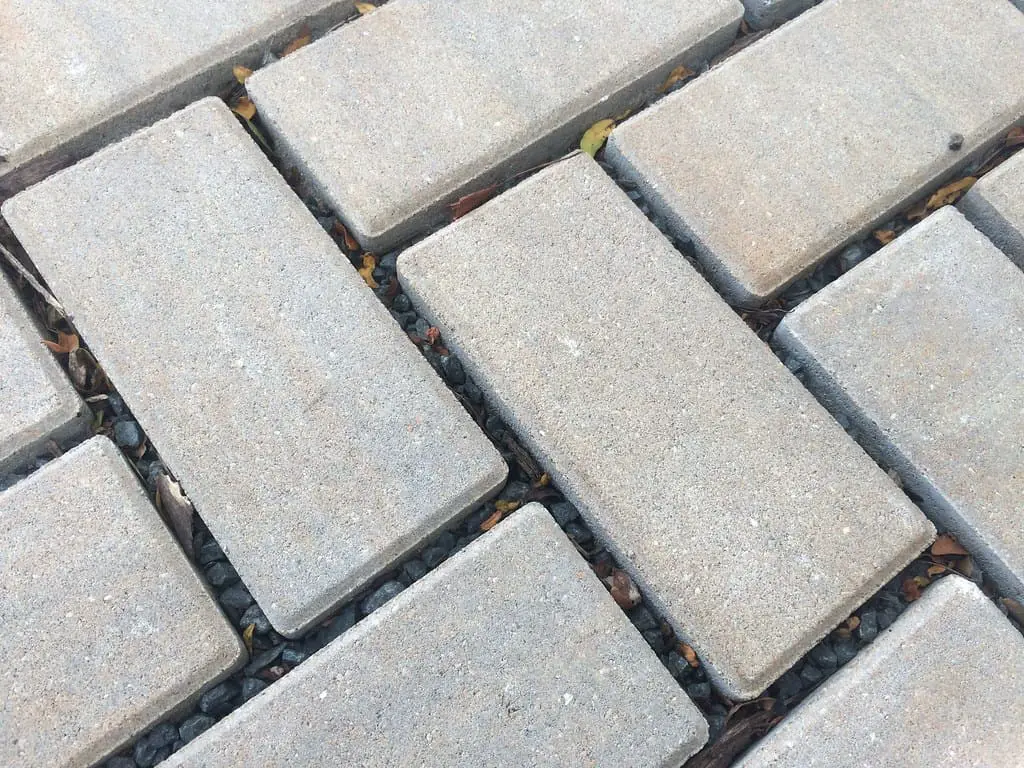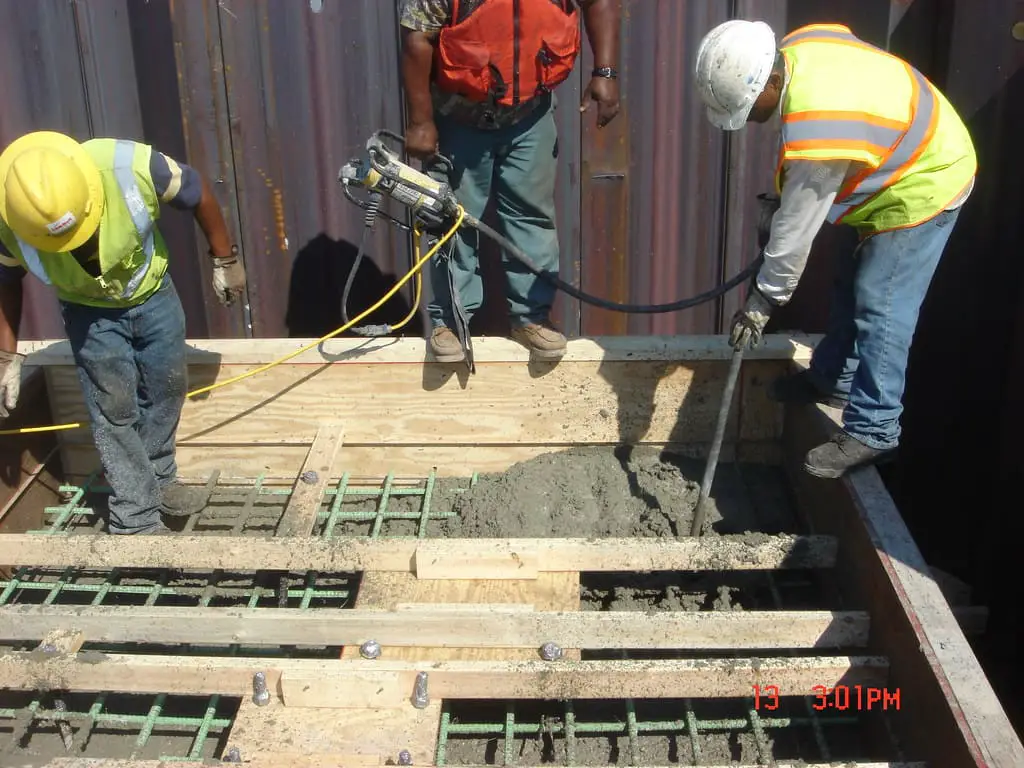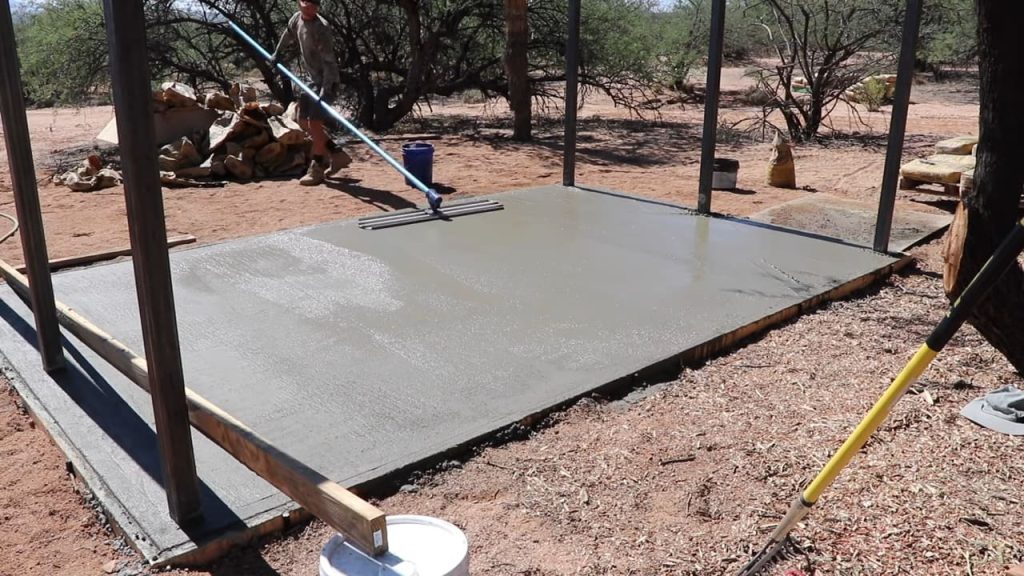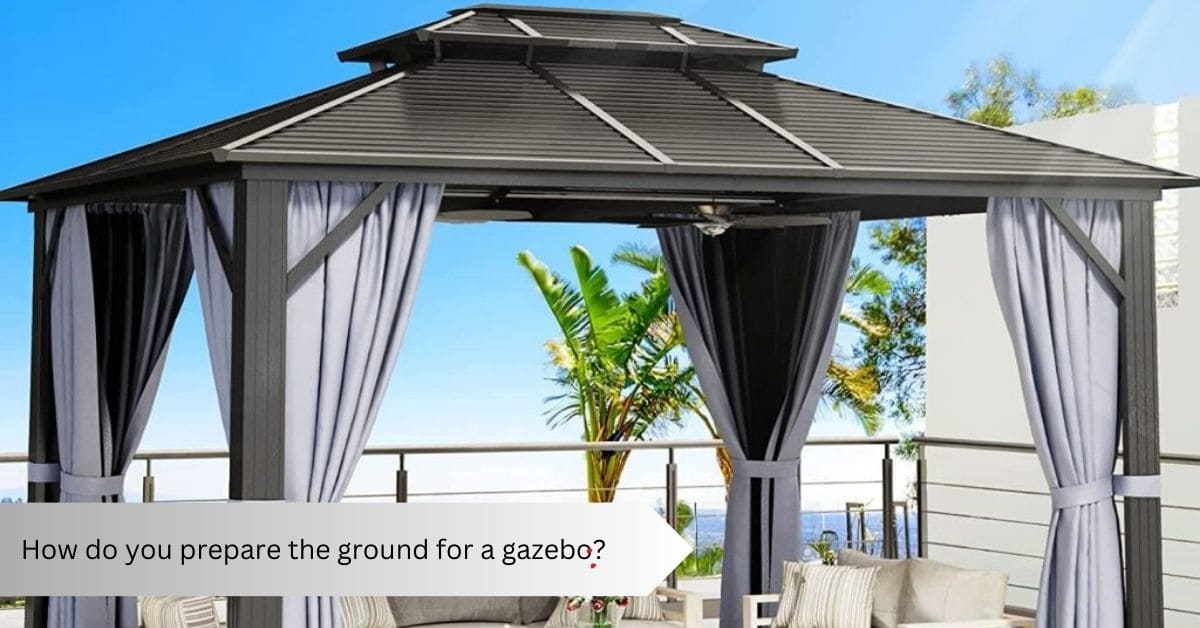Installing a gazebo in your garden is a great way to extend your outdoor living space. Before you can put up the structure, however, a few steps need to be taken to prepare the ground for the pavilion.
This guide about how you prepare the ground for a gazebo will walk you through each step of how to prepare your ground for a gazebo.
How do you prepare the ground for a gazebo: Before you get your garden shed or gazebo, clean up the area where you want to build it. Take out any junk, plants, or rocks in the way. Also, ensure the ground goes down at least 10 feet from the site on all sides.
Safety Measures to Keep in Mind
Preparing the ground for a gazebo can involve heavy lifting, digging, and working with tools, so it’s important to take safety measures to prevent injury. Here are some safety tips to keep in mind:
- Wear protective gear such as gloves, safety glasses, and sturdy footwear to protect your hands, eyes, and feet from potential hazards.
- Use appropriate tools and equipment to avoid strain or injury, such as using a wheelbarrow to move heavy materials and a digging bar to break up tough soil.
- Check for underground utilities before digging to prevent accidental damage to pipes or cables. Contact your local utility company to mark any underground lines.
- Take breaks and stay hydrated to prevent fatigue and heat exhaustion when working in hot weather.
- Follow manufacturer instructions carefully when assembling the gazebo to ensure proper installation and avoid structural issues.
- Ask for assistance when lifting heavy materials or assembling the gazebo to avoid strain or injury.
By following these safety measures, you can minimize the risk of injury and enjoy a successful gazebo installation.
How do you prepare the ground for a gazebo?
To prepare the ground for a gazebo, follow these general steps:
Step 1: Remove Obstacles
The first step to preparing your ground for a gazebo is to remove any obstacles that may be in the way. This includes plants, rocks, and other debris. Be sure to carefully dig up any roots or rocks that are in the way of where you plan to build the gazebo.
Step 2: Clearing the Construction Area for Your Gazebo:
Before building a gazebo on your property, you need to make sure the ground is clear and level. Remove debris, grass, roots, and rocks, and fill any holes with compacted soil. Plan ahead and hire help if needed.
Make sure you have at least four extra feet around the foundation’s perimeter. For example, if your gazebo is 8′ x 8′, the clear area should be 12′ x 12′ or 144 square feet. The foundation area should be in the center of this space.
Step 3: Level the Ground

Once all of the obstacles have been removed, it’s time to level the ground. Use a shovel and rake to make sure that the area is even and smooth.
This will reduce the amount of extra work needed when setting up the gazebo.
Step 4: Determine Orientation:
The orientation of the gazebo can affect its aesthetic appeal, as well as its functionality. Consider the gazebo’s view and the sun’s direction throughout the day.
You may also want to consider the direction of prevailing winds and the need for privacy. Additionally, make sure that the orientation of the gazebo conforms to any local building codes or zoning regulations.
Step 5: Install a Base Plate

The next step is to install a base plate for the gazebo.
Depending on your gazebo’s specifications, this could be concrete slab or paver stones laid in a 4’x4’ square.
Be sure to level these with shims and a level to ensure an even base for the gazebo.
Step 6: Add Gravel

After the base plate is installed, it’s time to add gravel. This will provide additional support and help reduce shifting or settling once the pavilion is in place.
Use gravel that is about 1-2 inches in diameter for the best results.
Step 7: Fill Gaps
Once the gravel is added, fill any gaps with soil or sand. This will help keep the gazebo stable and reduce shifting or settling after installation. Ensure all the gaps are filled and leveled before moving on to the next step.
Step 8: Setting up the Foundation for Your Gazebo:
Before building your gazebo, it’s important to ensure the ground is level and strong. You will need to create a foundation using materials like concrete, wood, or brick paver patios.
You can do this yourself or hire a contractor to help. Start by marking the area where the foundation will go using stakes and guidelines. This will help you prepare the area for the foundation you’ve chosen.
Step 9: Install Posts
The final step is to install the posts for the gazebo. Carefully measure and mark where you want the posts to go, then use a post-hole digger or auger to dig the holes.
After that, place concrete footings in each hole and insert the posts. Be sure to level them before moving on to the next step.
Types of Foundations for a Gazebo
Regardless of the terrain, you can use several types of foundations for your gazebo. A sturdy foundation is essential for your gazebo’s longevity.
Don’t worry if the ground is uneven or rough; there are ways to create a solid and level foundation. With a good foundation, you can enjoy your gazebo for years.
Concrete Pads as a Gazebo Foundation:
Concrete pads are a strong foundation option for your gazebo, especially if they hold heavy items like a hot tub or pool equipment.
They are typically used for larger structures and can provide a polished look with the addition of flagstone.
However, they can be expensive and should be installed by a professional who knows the building codes in your area to ensure compliance.
Using Super Spikes as a Foundation Option:
Super spikes are a good option if you need to level one end of your gazebo and want to avoid the work of pouring concrete footings. They are also useful if you want to raise the gazebo floor.
However, checking your area’s construction rules and codes is important before purchasing super spikes.
They are best used in warmer regions without snow or frost. If your gazebo is raised, you may want to add a skirt, lattice, or stairs to cover the foundation.
Sonotube and Concrete Footings for a Sturdy Gazebo Foundation:
If you need to build a gazebo on uneven ground or if building codes require it, you can use Sonotube or concrete footings as a foundation. This type of foundation is expensive but provides a sturdy base, especially on inclined surfaces.
It is best to hire a professional contractor who knows the building codes in your area to install them. Concrete footings are not included in gazebo kits.
Building a Gazebo Foundation with Cinder Blocks:
Cinder blocks are another easy way to level your gazebo floor. They are strong and available at local building suppliers or home improvement stores.
However, if the surface under them is soft, the pavilion may sink, so it is important to use multiple cinder blocks and overlapping rows to prevent this.
You can add a skirt to your structure to hide the cinder block foundation. The kit usually comes with a single row of skirting, which can cover the foundation below and keep critters away from the bottom of the gazebo.
Patio Stones as an Easy Gazebo Foundation Option:
Patio stones are an easy and affordable way to support the wooden floor of your pavilion, as long as the ground is level and the structure is not too big. You can buy patio stones from your local building supplier.
To install them, place one stone under each corner of the gazebo and one or two stones at the center of the floor.
Ensure the stones are level and upright, and use shims to level the floor. Shims can be wood or metal, but cedar shims are durable.
It’s important to use 2″ x 12″ x 24″ (or 24″ x 24″) patio stones to prevent the floor from sinking and to achieve a level ground for the foundation. You can also add a layer of crushed stones underneath the patio stones for better drainage.
How to install Concrete Slab Foundation?

Are you ready to build a concrete slab foundation for your gazebo? Here are the steps:
- First, construct a wooden frame with two-by-four lumber; then dig six inches down within that frame.
- Afterward, fill the excavation area up to four inches high with gravel or crushed rock and pour in mixed concrete according to directions.
- Building a concrete slab requires diligent work, starting with constructing the frame – laying out two-by-four lumber around your desired area.
- After that’s completed, it’s time to get digging – excavate within this frame at a depth of six inches.
- Once you’ve got enough room for filler material like gravel or crushed rock, add in four inches worth and then prep the concrete mixture according to tech specs from its manufacturer.
- When everything is ready, pour in the mix and use screeding tools so all surfaces are evened out; give it about 7–10 days for total drying before tackling any finishing touches!
Also Read: Tips for How to Anchor a Gazebo to Concrete: A Step-by-Step Guide
Patio stones made from brick pavers
Looking to create a DIY foundation for your gazebo? Opting for brick paver patio stones is an intelligent choice. You can easily build the perfect base with good drainage and a level area.
We recommend 12″ x 24″, at least 1.5″ thick! Make sure that it’s suitable, though – these bricks work great with smaller barbeque or hard-top gazebos of 14 feet or less in length/width.
Make the ground ready
If you want the perfect patio, start by laying stones in a uniform pattern on top of compacted soil. Marking off your perimeter will help ensure success!
Add an extra layer of stability? Gravel or crushed rock can do just the trick. Finally, use a level to make sure everything is even with no slope before installing that gazebo for ultimate serenity.
Footings made of concrete
Got an uneven outdoor space that needs a gazebo? You need concrete footings! These crucial foundations not only make your structure stable but also help you avoid having to lay down a slab.
Unfortunately, it’s best left in the hands of professionals due to its requirement for precision – definitely don’t try this at home. Luckily, they’re great options if you’re looking for lasting stability rather than something short-term like soft-top gazebos.
Concrete Footing Installation

Once you’ve chosen a spot for your gazebo, double-check with utilities and cable companies to ensure their lines aren’t running through where you want to excavate.
Measure things accurately so there’s no guesswork involved when the contractors are ready to dig those post holes.
They need then deep enough that after adding in concrete plus some rebar reinforcement, it’ll take around ten days properly cure before being secure enough for bolting down anchor brackets holding up your new shelter!
Also Read: How to Secure a Gazebo from Wind
The gazebo base is made of wood.
Give your outdoor space a natural, custom touch by building an attractive wooden frame for your gazebo. If you’re confident in DIY skills and want to save money, putting together the deck yourself is a great option!
Create the deck

Constructing a sturdy base for your gazebo is essential to the project. Utilize wood beams to create a “box” around the perimeter, then complete it with cedar or pressure-treated lumber flooring.
This will ensure that your outdoor structure remains durable in any weather conditions! For added protection and aesthetic appeal, consider staining and sealing beforehand.
With all these elements in place, you can start assembling the gazebo itself so that it’s ready to enjoy upon arrival.
Enjoy a sturdy foundation for your gazebo with our high-quality structures placed on solid bases. Select from wood decking, concrete footings, and more to ensure that you’ll be able to make the most of this outdoor oasis in years to come!
Creating a Solid Base
Creating a solid base is crucial when building a gazebo. A sturdy foundation ensures the structure is level and withstands harsh weather conditions.
Different options are available for creating a solid base for your gazebo, depending on the size, terrain, and budget.
Lay a Weed Barrier over the Ground:
Before starting the base construction, lay a weed barrier over the ground where you want to build your gazebo. The weed barrier helps prevent unwanted vegetation growth and ensures the base remains intact. You can use landscaping fabric or any other suitable weed barrier material.
Add a layer of Crushed Stone or Gravel for Drainage and Stability:
Add a layer of crushed stone or gravel on top of the weed barrier to create a stable and long-lasting base for your gazebo. This layer will help with drainage and improve stability. It is recommended to use crushed stones or gravel of ¾ inches or smaller size. Spread the layer evenly over the ground.
Tamp down the Stone with a Hand Tamper or Plate Compactor:
After laying down the layer of crushed stone, you should tamp it down with a hand tamper or plate compactor. This will help compact the stone, making it more stable and durable. Tamping should be done in layers until the stone is solid and level.
Add a layer of Sand for Levelling and Setting pavers (if using):
If you plan to install pavers, add a layer of sand on top of the crushed stone. The sand helps with leveling and setting the pavers. Spread the sand evenly over the crushed stone and use a straight board to level it. Make sure the sand is compacted and smooth before starting to lay the pavers.
Installing the Gazebo
Installing a gazebo can be an exciting project for many homeowners. However, it is important to take the necessary steps to ensure the installation is done safely and correctly. Here are some general steps to follow:
Assemble the Gazebo:
The first step in installing a gazebo is to assemble it according to the instructions provided with the kit. Ensure all the tools, hardware, and equipment are on hand before beginning the assembly process. It’s important to follow the instructions carefully and in the correct order to ensure a proper installation.
Place the Gazebo on the Foundation:
Once the gazebo is fully assembled, carefully move it to the foundation. Ensure the foundation is level and clean before placing the gazebo. If necessary, use shims to level the gazebo on the foundation.
Anchor the Gazebo to the Foundation:
To prevent the gazebo from being blown away by strong winds, it’s important to anchor it securely to the foundation. Depending on the foundation type, different anchor methods may be used.
For example, for a wooden deck, metal brackets or lag bolts can be used to attach the gazebo to the deck. For a concrete or paver foundation, anchor bolts or concrete anchors may be used. Always follow the instructions provided with the kit for the appropriate anchor method.
Maintenance and Care
Maintaining and caring for your gazebo is important to keep it in good condition and extend its lifespan. Here are some tips for maintaining and caring for your gazebo:
Clean the Gazebo Regularly:
Regular cleaning of the gazebo is essential to maintain its appearance and longevity. You can sweep or brush off the debris from the surface and use a mild soap solution to clean the surfaces. You can also use a power washer with caution as high pressure can damage the wood.
Protect the Gazebo from Weather Damage:
Weather can cause damage to the gazebo, especially when it is exposed to the elements. Consider using a water-resistant sealant to protect the wood from moisture.
Apply a fresh coat of sealant every year or two to keep it well protected. You can also use a weather-resistant cover when the gazebo is not used.
Repair Any Damage Promptly:
Prompt repair of any damage can help extend the life of the gazebo. Check for any signs of rot, cracks, or insect infestation regularly. Address any issues as soon as possible to prevent further damage. You can sand down any rough spots, replace any broken parts, and apply a sealant to the affected areas.
FAQs:
Q:1 What is the recommended foundation for a gazebo?
A gazebo can be built on a flat, level, and square base of concrete, paving slabs, or decking. Concrete is the most preferred base for a gazebo, but if you already have a flat paved or decked area in your garden, the gazebo can be built on that too.
Q:2 What should be put on the ground before installing a gazebo?
Concrete footings support gazebos when the ground is uneven or the building codes require it. They raise the gazebo and make it stable on inclined surfaces. They can also be used on even surfaces when a concrete slab is not needed.
Q:3 Is it advisable to place a gazebo directly on the grass?
Yes, you can put a gazebo on the grass.
Q:4 What is the most cost-effective foundation option for a gazebo?
Using a concrete pad as a foundation is a good choice if you have a big pavilion or your ground is damp or marshy. But a gravel pad or super spikes might be better if you’re looking for a more affordable option.
Q:5 Is it necessary to anchor a gazebo to the ground?
To prevent accidents, securing gazebos to the ground is important. There are three ways to anchor a gazebo to pavers. You can either drill the gazebo directly into the pavers, drive concrete footers between the pavers, or use weights to hold the gazebo in place.
Q:6 Can a gazebo be installed on top of gravel?
To ensure good drainage, crushed gravel can be used as the base for your gazebo instead of having it sit directly on moist ground. Another option is to pour a concrete slab and set the gazebo on top of it, or to order the gazebo without a floor and bolt the posts directly to the concrete slab.
Conclusion
Installing a gazebo in your garden is an exciting project; it can be accomplished easily with the right preparation. By following these steps to prepare your ground for a gazebo, you’ll have the perfect foundation for your outdoor living space in no time.
We hope this guide about how do you prepare the ground for a gazebo has helped you out and that you’ll soon be enjoying your new outdoor area!
Happy building!

